#Space Technology
Text
Comin’ in Hot: Seven Things to Know About our New Heat Shield
What goes up, must come down, and from space, without burning up in an atmosphere. That’s why we’re pumped for the Low-Earth Orbit Flight Test of an Inflatable Decelerator, or LOFTID. Launching on Nov. 1, 2022, with the National Oceanic and Atmospheric Administration’s (NOAA) Joint Polar Orbiting Satellite System-2 (JPSS-2) mission, this technology demonstration marks the next step in advancing an innovative heat shield design that could one day be used to land heavy payloads – including humans – on Mars!
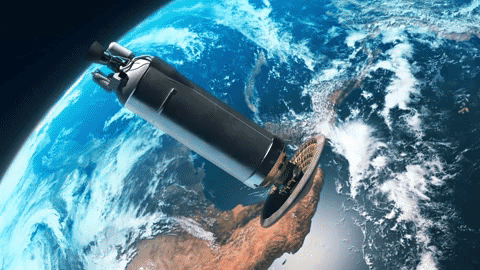
Here are seven things to know about this innovative re-entry system:
1. LOFTID is the first-ever in-orbit test of this technology.
Inflatable heat shields, called Hypersonic Inflatable Aerodynamic Decelerators (HIADs), have been in the works for more than a decade. In 2012, the third of the Inflatable Re-entry Vehicle Experiments (IRVE) launched on a suborbital sounding rocket from the Wallops Flight Facility, demonstrating a 3-meter (10-foot) diameter inflatable heat shield.
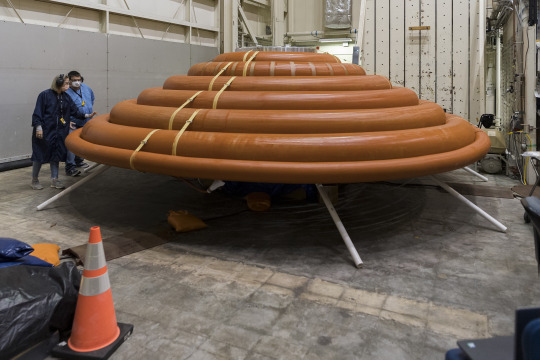
But the LOFTID re-entry vehicle, at 19.7 feet (6 meters) in diameter, will be the largest blunt body aeroshell to ever go through atmospheric entry. Designed to withstand temperatures as high as 2900°F (1600°C), this first-ever in-orbit test of this technology will prove if it can successfully slow down large payloads – such as crewed spacecraft, robotic explorers, and rocket components – enabling them to survive the heat of re-entry at planetary destinations with an atmosphere.
youtube
2. You can find out how this tech works in real-time.
LOFTID is unique in that all operations will happen within a few hours of launch. After the JPSS-2 satellite safely reaches orbit, the LOFTID vehicle will separate from the upper stage of the Atlas V rocket and begin re-entry into Earth’s atmosphere. If all goes as planned, the technology will help the vehicle decelerate from hypersonic (more than 25 times faster than the speed of sound) down to subsonic flight, less than 609 miles per hour for a safe splash down and recovery from the Pacific Ocean.
While in flight, engineers at NASA’s Langley Research Center will receive location data every 20 seconds and onboard sensors and cameras will record more comprehensive data about the technology’s performance. You can get a behind-the-scenes look at Langley’s Flight Mission Support Center where the LOFTID project team will be monitoring the flight test at NASA.gov/live following the launch.
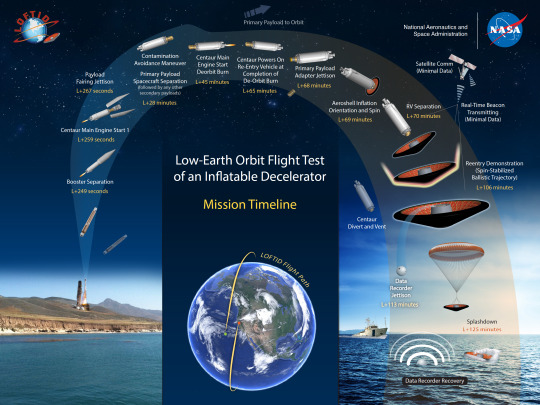
3. A lemon-sized capsule ejected into the Pacific Ocean will hold key flight data.
The LOFTID re-entry vehicle will record both sensor and camera data during its flight. The data will include the temperatures and pressures experienced by the heat shield and will illustrate how well the technology performed during the demonstration.
Although the goal is to retrieve the LOFTID re-entry vehicle after it splashes down in the Pacific Ocean, the team wanted a back-up option just in case they can’t recover it. Enter the tiny yellow package called an ejectable data module (EDM) which will also record flight data. The EDM will be released from the spacecraft at an altitude of about 50,000 feet. It will free fall into the Pacific Ocean off the coast of Hawaii and should land within 10 miles of the spacecraft’s splash down location. A recovery team, that has practiced hide-and-seek of the EDM on land and sea, will use GPS to search an approximately 900-mile area of the Pacific Ocean to find their “lemon.”
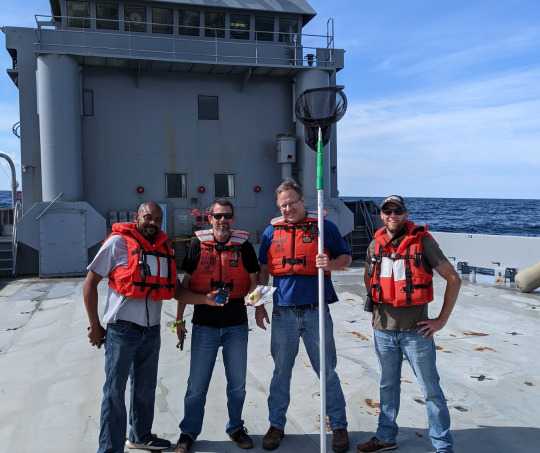
4. This heat shield packs a punch.
Although NASA has historically relied on rigid aeroshells, parachutes, and retro-propulsion (rockets) to decelerate people, vehicles, and hardware during entry, descent, and landing operations, a benefit of inflatable heat shields is that they take up less space in a rocket, allowing more room for other hardware or payloads. LOFTID’s aeroshell has been folded and tightly packed down to 4 by 1.5 feet for launch and stacked in the United Launch Alliance (ULA) Atlas V rocket payload fairing.

5. LOFTID is dedicated in honor of one of its innovators.
LOFTID was developed as a partnership with ULA and is dedicated to the memory of Bernard Kutter, ULA manager of advanced programs, who passed away in August 2020. Kutter was instrumental in advancing the inflatable heat shield design and developing the plan to test the system on an Atlas V rocket. He was an advocate for both space technology and expanding access to space. Kutter’s NASA and ULA counterparts agree that LOFTID is unlikely to have made it to space without his vision and passion.
youtube
6. LOFTID is made of tough stuff.
Synthetic fibers make up the inflatable structure, braided into tubes that are, by weight, 10 times stronger than steel. The tubes are coiled so that they form the shape of a blunt cone when inflated. The thermal protection system that covers the inflatable structure can survive searing entry temperatures up to 2,900 degrees Fahrenheit. Researchers used the same heat-shielding materials to create a fire shelter prototype for firefighters battling forest fires.
youtube
7. You can make your own LOFTID Halloween costume!
Still looking for an out-of-this world Halloween costume? With a few commonly found materials, like orange pool noodles and duct tape, you can create your own LOFTID costume. However, we make no promises of protecting or slowing you down from becoming the life of the party.

Follow @NASA_Technology for the latest updates on LOFTID. Don’t miss our live coverage leading up to launch from the Vandenberg Space Force Base in California. The NASA Edge JPSS-2 Tower Rollback Show airs live on NASA TV and YouTube on Tuesday, Nov. 1 at 12 a.m. EDT, and NASA TV live launch coverage will begin at 4:45 a.m. EDT.
Make sure to follow us on Tumblr for your regular dose of space!
1K notes
·
View notes
Text
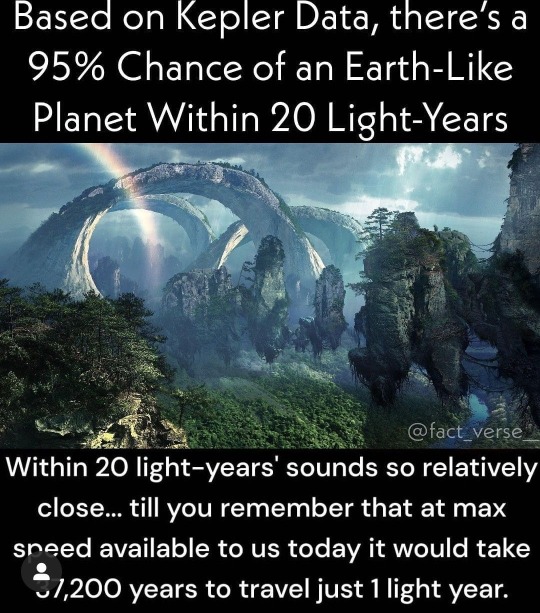
#astronomy#astronomers#universe#nasa#astrophotography#nasa photos#astrophysics#outer space#nasawebb#hubble space telescope#kepler#telescope#space technology#i love astronomy#astronomy facts#astrography#astro community#astrobiology#planetary science#space exploration#space science#space#science#cosmos#astro notes#astro observations#astroblr#planetary nebula#nebula#galaxies
60 notes
·
View notes
Text

Easter Island under the stars
Credit- grafixart_photo& Amazing Astronomy
#astrology observations#astrophotography#astroworld#astronaut in the ocean#galaxy#tumblr people#photography#easter island#astronomy#lost in space#stars#universe#space technology
233 notes
·
View notes
Video
No zoom by European Space Agency
Via Flickr:
This image shows a globular cluster known as NGC 1651. Like the object in another recent Picture of the Week, it is located about 162 000 light-years away in the largest and brightest of the Milky Way’s satellite galaxies, the Large Magellanic Cloud (LMC). A notable feature of this image is that the globular cluster almost fills the entire image, even though globular clusters are only about 10 to 300 light-years in diameter (NGC 1651 has a diameter of roughly 120 light-years). In contrast, there are numerous Hubble Pictures of the Week that feature entire galaxies — which can be tens or hundreds of millions of light-years in diameter — that also more or less fill the whole image. A common misconception is that Hubble and other large telescopes manage to observe wildly differently sized celestial objects by zooming in on them, as one would with a specialised camera here on Earth. However, whilst small telescopes might have the option to zoom in and out to a certain extent, large telescopes do not. Each telescope’s instrument has a fixed ‘field of view’ (the size of the region of sky that it can observe in a single observation). For example, the ultraviolet/visible light channel of Hubble’s Wide Field Camera 3 (WFC3), the channel and instrument that were used to collect the data used in this image, has a field of view roughly one twelfth the diameter of the Moon as seen from Earth. Whenever WFC3 makes an observation, that is the size of the region of sky that it can observe. The reason that Hubble can observe objects of such wildly different sizes is two-fold. Firstly, the distance to an object will determine how big it appears to be from Earth, so entire galaxies that are relatively far away might take up the same amount of space in the sky as a globular cluster like NGC 1651 that is relatively close by. In fact, there's a distant spiral galaxy lurking in this image, directly left of the cluster — though undoubtedly much larger than this star cluster, it appears small enough here to blend in with foreground stars! Secondly, multiple images spanning different parts of the sky can be mosaiced together to create single images of objects that are too big for Hubble’s field of view. This is a very complex task and is not typically done for Pictures of the Week, but it has been done for some of Hubble’s most iconic images. [Image Description: A spherical collection of stars, which fills the whole view. The stars merge into a bright, bluish core in the centre, and form a sparse band around that out to the edges of the image. A few stars lie in front of the cluster, with visible diffraction spikes. The background is dark black.] Credits: ESA/Hubble & NASA, L. Girardi, F. Niederhofer; CC BY 4.0
#NGC 1651#ESA#European Space Agency#Space#Universe#Cosmos#Space Science#Science#Space Technology#Tech#Technology#HST#Hubble Space Telescope#Galaxy#Supernova#NASA#Creative Commons#Stars#Star#Globular Cluster#flickr
20 notes
·
View notes
Text
Some of the best footage from Starship IFT-3! I don't think we've seen atmospheric reentry footage like this before. Just look at the plasma forming againt the heat tiles!
P.S. Happy birthday SpaceX!
14 notes
·
View notes
Text
BREAKING: NASA releases Cgi file abt how aliens are real and Jesus is fake thanks for the reddit coins u studip idiots
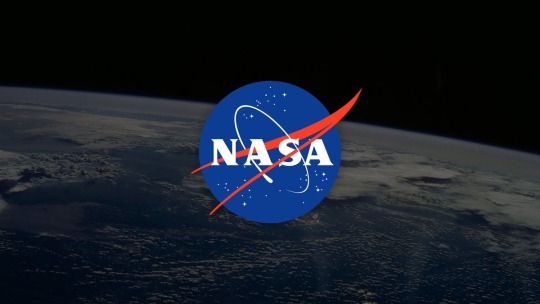
Breaking news 2001 real actually really on the cyber computer network

19 notes
·
View notes
Text

satellite and cutie pie
#sputnik#space race#cold war#space technology#soviet union#dumb little draws#clip studio paint#digital art#digital painting
11 notes
·
View notes
Text
Heavy industries
@ewanmakesthings



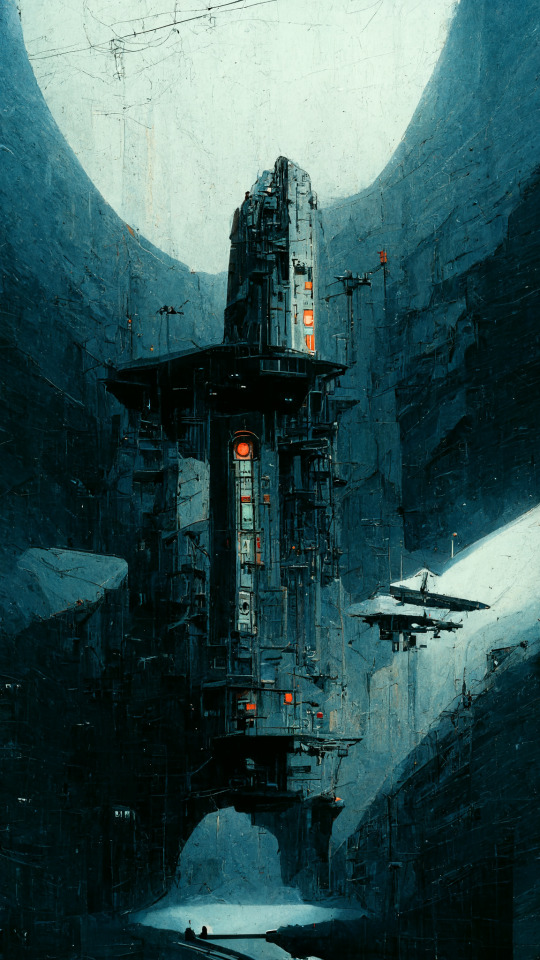
#midjourney#ai art#midjourney ai#midjourney community#ai artist#midjourney art#blade runner#space technology#engineering#industrial#scifinovel#scifi_background
104 notes
·
View notes
Text
Should humans colonize other planets?
Well if we colonize other planets we will get fabulous kinds of opportunities like-
Expansion of Human potential Colonizing other planets could be a way to expand human potential and push the boundaries of what is possible.
Scientific Advancements Colonizing other planets would present a huge opportunity for scientific research and discovery. We could learn more about planetary formation, the origins of life, and the potential for life elsewhere in the universe.
Resources Some resources maybe there which are not found in Earth like Mars has ice and water.
But if we try colonizing other planets
Environmental Impact forming another planet to make it habitable could have significant and unpredictable environmental consequences. We should be careful not to repeat the mistakes we have made on Earth by damaging other planets' ecosystems.
Cost of money 💷
Risks There are many risks associated with colonizing other planets, such as radiation exposure, extreme conditions.
My Opinion- We should colonize another planet it will have many opportunities but we should do it slowly and vigilantly because there are many risks. Reply what you think?
#Should humans colonize other planets?#Planets#environment#space technology#colonize#Earth#Mars#Nature#Ecosystem#space#solar system#universe
6 notes
·
View notes
Video
Proba-3's laser-precise positioning by European Space Agency
Via Flickr:
An infrared view of a laser-based test campaign – taking place at Redwire Space in Kruibeke, Belgium – which represents crucial preparation for ESA’s precision formation flying mission, Proba-3. Later this year, two satellites will be launched together into orbit to maintain formation relative to each other down to a few millimetres, creating an artificial solar eclipse in space. Proba-3’s ‘Occulter’ spacecraft will cast a shadow onto the other ‘Coronagraph’ spacecraft to block out the fiery face of the Sun and make the ghostly solar corona available for sustained observation for up to six hours per 19.5 hour orbit. However to maintain the position of a shadow just a few centimetres across on the Coronagraph satellite from the Occulter satellite around 150 m away, the two satellites rely on a suite of sensors, including intersatellite radio links, GNSS, visual imaging and – for the most precise positioning at closest range – a laser metrology (or ‘measurement of measurement’) system. This system will shoot a laser from the Occulter spacecraft toward a corner cube retroreflector placed on the face of the Coronagraph spacecraft for tracking of relative position and attitude (pointing direction), achieving millimetre precision. “To calibrate Proba-3’s laser metrology system, its performance was tested within the 60-m long Redwire cleanroom,” explains Damien Galano, Proba-3’s mission manager. “The Coronagraph’s laser was reflected off a retroreflector and the resulting positioning measurements checked against absolute ‘ground truth’ using a separate laser tracking system.” This mission is being put together for ESA by a consortium led by Spain’s Sener, with participation by more than 29 companies from 14 countries. The Proba-3 platforms have been designed by Airbus Defence and Space in Spain and satellite integration by Redwire in Belgium. GMV in Spain is responsible for Proba-3’s formation flying subsystem while its main coronagraph instrument comes from Belgium’s Centre Spatial de Liège, CSL. Proba-3 is due to be launched by PSLV-XL launcher from India in September. Credits: ESA - M. Pédoussaut
#ESA#European Space Agency#Space#Universe#Cosmos#Space Science#Science#Space Technology#Tech#Technology#In The Clean Room#Laser#Testing#Test#Engineering#Engineer#Engineers#flickr
3 notes
·
View notes
Text
It’s amazing how much info we can gleam from the James Webb Space Telescope! The geek in me is ecstatic that we can figure out atmospheric details of WASP-39 b.
"We observed the exoplanet with multiple instruments that together provide a broad swath of the infrared spectrum and a panoply of chemical fingerprints inaccessible until JWST," said Natalie Batalha, an astronomer at the University of California, Santa Cruz, who contributed to and helped coordinate the new research. "Data like these are a game changer."
The suite of discoveries is detailed in a set of five newly submitted scientific papers, available on the preprint website arXiv. Among the unprecedented revelations is the first detection in an exoplanet atmosphere of sulfur dioxide, a molecule produced from chemical reactions triggered by high-energy light from the planet's parent star. On Earth, the protective ozone layer in the upper atmosphere is created in a similar way.
I wish we had spent more money in creating a bigger satellite (maybe we will build & launch something larger in the future), but suffice to say JWST was money well spent!
#space#space telescope#space technology#james webb space telescope#exoplanets#science#telescope#wasp 39 b
32 notes
·
View notes
Text

Angel Nebula NGC2170 8K 350mp
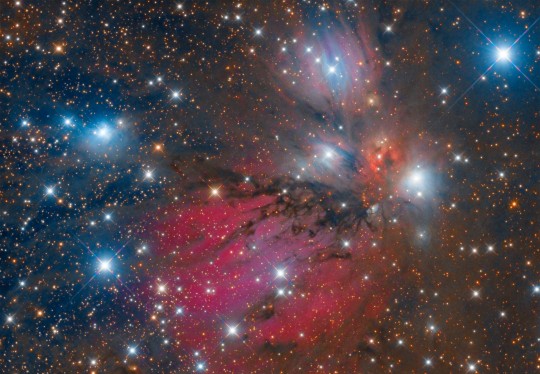
#astronomy#nasa#astronomers#universe#astrophotography#nasa photos#nasawebb#astrophysics#outer space#hubble space telescope#space exploration#space#spacecraft#telescope#space telescopes#space technology#space travel#deep sky#astro community#astro notes#astro observations#astroblr#cosmos#astrology observations#galaxies#galaxy#goddard space flight center#planetary nebula#nebula#space photography
117 notes
·
View notes
Text

Behold the magnificent SpaceX Starship ready for it's journey beyond Earth's atmosphere. This close up view captures the awe inspiring details of it's sleek design and the strength of the launch tower arms. Join us in celebrating the future of space exploration.
#spacex#star ship#rocket launch#space exploration#space technology#space enthusiasts#space art#rocket art#digital art#tech marvel#space inspiration#space community#dream big#explore
5 notes
·
View notes
Video
Euclid’s view of the Horsehead Nebula by European Space Agency
Via Flickr:
Euclid shows us a spectacularly panoramic and detailed view of the Horsehead Nebula, also known as Barnard 33 and part of the constellation Orion. At approximately 1375 light-years away, the Horsehead – visible as a dark cloud shaped like a horse’s head – is the closest giant star-forming region to Earth. It sits just to the south of star Alnitak, the easternmost of Orion’s famous three-star belt, and is part of the vast Orion molecular cloud. Many other telescopes have taken images of the Horsehead Nebula, but none of them are able to create such a sharp and wide view as Euclid can with just one observation. Euclid captured this image of the Horsehead in about one hour, which showcases the mission's ability to very quickly image an unprecedented area of the sky in high detail. In Euclid’s new observation of this stellar nursery, scientists hope to find many dim and previously unseen Jupiter-mass planets in their celestial infancy, as well as young brown dwarfs and baby stars. “We are particularly interested in this region, because star formation is taking place in very special conditions,” explains Eduardo Martin Guerrero de Escalante of the Instituto de Astrofisica de Canarias in Tenerife and a legacy scientist for Euclid. These special conditions are caused by radiation coming from the very bright star Sigma Orionis, which is located above the Horsehead, just outside Euclid’s field-of-view (the star is so bright that the telescope would see nothing else if it pointed directly towards it). Ultraviolet radiation from Sigma Orionis causes the clouds behind the Horsehead to glow, while the thick clouds of the Horsehead itself block light from directly behind it; this makes the head look dark. The nebula itself is made up largely of cold molecular hydrogen, which gives off very little heat and no light. Astronomers study the differences in the conditions for star formation between the dark and bright clouds. The star Sigma Orionis itself belongs to a group of more than a hundred stars, called an open cluster. However, astronomers don’t have the full picture of all the stars belonging to the cluster. “Gaia has revealed many new members, but we already see new candidate stars, brown dwarfs and planetary-mass objects in this Euclid image, so we hope that Euclid will give us a more complete picture,” adds Eduardo. The data in this image were taken in about one hour of observation. This colour image was obtained by combining VIS data and NISP photometry in Y and H bands; its size is 8800 x 8800 pixels. VIS and NISP enable observing astronomical sources in four different wavelength ranges. Aesthetics choices led to the selection of three out of these four bands to be cast onto the traditional Red-Green-Blue colour channels used to represent images on our digital screens (RGB). The blue, green, red channels capture the Universe seen by Euclid around the wavelength 0.7, 1.1, and 1.7 micron respectively. This gives Euclid a distinctive colour palette: hot stars have a white-blue hue, excited hydrogen gas appears in the blue channel, and regions rich in dust and molecular gas have a clear red hue. Distant redshifted background galaxies appear very red. In the image, the stars have six prominent spikes due to how light interacts with the optical system of the telescope in the process of diffraction. Another signature of Euclid special optics is the presence of a few, very faint and small round regions of a fuzzy blue colour. These are normal artefacts of complex optical systems, so-called ‘optical ghost’; easily identifiable during data analysis, they do not cause any problem for the science goals. The cutout from the full view of the Horsehead Nebula is at the high resolution of the VIS instrument. This is nine times better than the definition of NISP that was selected for the full view; this was done for the practical reason of limiting the format of the full image to a manageable size for downloading. The cutout fully showcases the power of Euclid in obtaining extremely sharp images over a large region of the sky in one single pointing. Although this image represents only a small part of the entire colour view, the same quality as shown here is available over the full field. The full view of the Horsehead Nebula at the highest definition can be explored on ESASky. [Image description] This square astronomical image is divided horizontally by a waving line between a white-orange cloudscape forming a nebula along the bottom portion and a comparatively blue-purple-pink upper portion. From the nebula in the bottom half of the image, an orange cloud shaped like a horsehead sticks out. In the bottom left of the image, a white round glow is visible. The clouds from the bottom half of the image shine purple/blue light into the upper half. The top of the image shows the black expanse of space. Speckled across both portions is a starfield, showing stars of varying sizes and colours. Blue stars are younger and red stars are older. Credits: ESA/Euclid/Euclid Consortium/NASA, image processing by J.-C. Cuillandre (CEA Paris-Saclay), G. Anselmi; CC BY-SA 3.0 IGO
#ESA#European Space Agency#Space#Universe#Cosmos#Space Science#Science#Space Technology#Tech#Technology#Dark Matter#Dark Energy#Dark Universe#Euclid#Euclid Mission#Stars#Horsehead Nebula#Nebula#Barnard 33#Orion#Alnitak#Stellar nursery#InfraRed#IR#flickr
37 notes
·
View notes
Text
Check out my blog on The journey on the Kardashev scale.
4 notes
·
View notes
Text
Happy New Year 2024 from Korea.
Year of the 🐲🐉!
#Seoul#korea#happy 2024#new year#drone show#drone#fireworks#amazing#video#viral#3d#technology#🎇#nature#space#Star#night#earth#awesome#tumblr#hd#dragon#dragon year#chinese#tradition#art#love#moon#animal
97K notes
·
View notes

